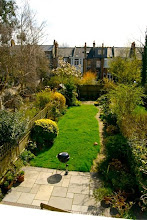
When cataclysm strikes – death, divorce, disaster, despair, of which I have had my fair share – there is a question that can hover in the air. ‘Why me?’ The answer, of course, is ‘why not me…’ But if one forgets this – and I do forget, as most of us do – then a reminder of the random harshness of life can be found in Shirley Jackson’s story, ‘The Lottery’. First published by the New Yorker on June 26th 1948 (and anthologised many times since), it opens on the morning of June 27th, a sunny summer’s day in rural America, as village people gather for their annual lottery.
What follows next is an account of how a scapegoat is chosen by lottery to be stoned to death by the rest of the community, a sacrificial victim to ensure a good harvest. Such is the vividness of contemporary detail that the tale seems less gothic fantasy than nightmarish reality: ‘The lottery was conducted – as were the square dances, the teenage club, the Halloween program – by Mr Summers, who had time and energy to devote to civic activities. He was a round-faced jovial man and he ran the coal business.’
The story was met with widespread horror; the following month, Jackson wrote of the difficulty in explaining a work of fiction, which had been seen by some readers as fact. “I hoped, by setting a particularly brutal ancient rite in the present and in my own village, to shock the story's readers with a graphic dramatization of the pointless violence and general inhumanity in their own lives.” Jackson lived in Bennington, Vermont – the epitome of civilized American life – and her readers responded with unusual venom. In the avalanche of hate mail she received, “I can count only thirteen that spoke kindly to me, and they were mostly from friends. Even my mother scolded me: ‘Dad and I did not care at all for your story in The New Yorker,’ she wrote sternly; ‘it does seem, dear, that this gloomy kind of story is what all you young people think about these days. Why don't you write something to cheer people up?’”
If not cheering, ‘The Lottery’ is nevertheless unexpectedly bracing, in its clear-sighted acknowledgement that little in life is fair, and of that much we can be certain.













